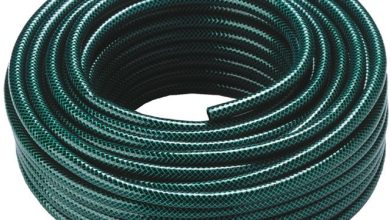As an audiophile, your quest for superior sound quality likely drives you to explore various tools and technologies that can enhance your listening experience. Among these tools, a rumble device stands out as an essential component for achieving the deep, immersive bass that many music enthusiasts crave. In this guide, we’ll delve into what a rumble device is, how it functions, and what to consider when choosing the right one for your audio setup.
What is a Rumble Device?
A rumble device is designed to enhance low-frequency sounds in music, providing a richer and more dynamic audio experience. It works by generating vibrations that replicate the sensation of bass, making you feel the music rather than just hearing it. This sensation is particularly vital in genres like electronic dance music, hip-hop, and movie soundtracks, where deep bass lines play a significant role. For a detailed understanding of its purpose, you can check out this link.
Understanding Different Types of Rumble Devices
When it comes to rumble devices, there are various types available, each catering to different audio needs and preferences. Understanding these types will help you make an informed decision.
1. Subwoofers
Subwoofers are perhaps the most common rumble devices used in home theater and audio systems. They specialize in producing low-frequency sounds, typically below 200 Hz. Subwoofers come in different sizes and configurations, from small satellite speakers to large floor-standing units. If you are serious about bass reproduction, investing in a high-quality subwoofer can dramatically improve your audio experience.
2. Bass Shakers
Bass shakers, also known as tactile transducers, are devices that physically vibrate to produce the sensation of bass without necessarily generating sound. They are typically mounted to your chair, couch, or floor, allowing you to feel the music as it plays. This tactile feedback can enhance your immersion, especially when watching movies or playing video games.
3. Vibration Speakers
Vibration speakers work by using the surfaces they are placed on to amplify sound. Unlike traditional speakers that emit sound waves into the air, vibration speakers turn any flat surface into a speaker. This can create a unique listening experience, but the quality may vary depending on the surface used.
4. Portable Rumble Devices
For audiophiles on the go, portable rumble devices are an excellent option. These compact devices can connect to your smartphone or tablet and provide a boost in bass response, enhancing your music listening experience without the bulk of traditional equipment.
Key Features to Consider When Choosing a Rumble Device
When selecting a rumble device, there are several key features to consider to ensure you get the best performance for your audio setup.
1. Frequency Response
One of the most critical aspects of any audio device is its frequency response. Look for a rumble device that can reproduce low frequencies effectively, typically down to around 20 Hz. This will ensure you experience the full depth of sound in your music and movies.
2. Power Rating
The power rating indicates how much power the device can handle. Higher wattage typically means more robust performance, especially for subwoofers. Ensure that the rumble device you choose matches the power output of your audio system to avoid distortion or damage.
3. Size and Space
Consider the size of the rumble device in relation to your available space. Larger subwoofers can deliver deeper bass but may not fit well in smaller rooms. Conversely, smaller devices may struggle to produce the desired level of rumble. Assess your room size and layout before making a decision.
4. Connection Options
Rumble devices can connect to your audio system in various ways, including wired and wireless options. Ensure that the device you choose is compatible with your current setup. If you prefer wireless connectivity, look for devices that support Bluetooth or Wi-Fi.
5. Build Quality and Design
The build quality of a rumble device can affect its performance and longevity. Look for devices made from sturdy materials that can withstand regular use. Additionally, consider the design and aesthetics to ensure that the device fits well with your existing equipment and decor.
Tips for Optimizing Your Rumble Device
Once you’ve chosen the right rumble device, consider the following tips to optimize its performance:
- Proper Placement: The placement of your rumble device can significantly affect its performance. Experiment with different locations to find the best position that enhances bass response without causing distortion.
- Calibration: Many rumble devices come with calibration features that allow you to adjust settings based on your room’s acoustics. Take the time to calibrate your device for optimal sound quality.
- Use Quality Audio Sources: The quality of the audio source can also impact the performance of your rumble device. Use high-quality music files or streaming services that support lossless audio to get the best results.
- Regular Maintenance: Keep your rumble device clean and in good condition. Regular maintenance can prolong its lifespan and ensure consistent performance.
Conclusion
Choosing the right rumble device can elevate your audio experience, providing the deep, resonant bass that audiophiles seek. By understanding the different types available, considering key features, and optimizing your setup, you can enjoy a richer and more immersive listening experience. Remember, the right rumble device is an investment in your love for music and sound.
Also read: Running Post





